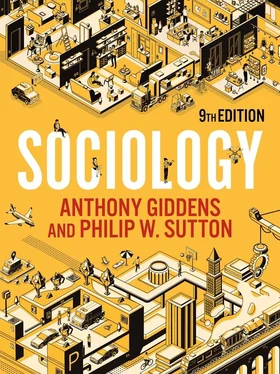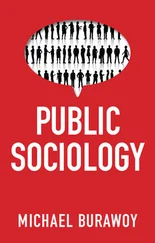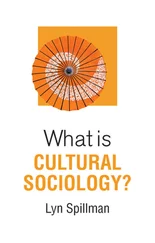GM crops are different from anything that has existed before, because they involve transplanting genes between different species. This is a much more radical intervention than older methods of cross-breeding. GMOs are produced by techniques of gene splicing that can be used to transplant genes between animals as well as plants. For instance, in some experiments, human genes have been introduced into farm animals, such as pigs, with a view eventually to providing replacement parts for human transplants. Human genes have even been spliced into plants, although the GM crops that have been marketed so far do not involve this kind of radical bioengineering.
Scientists claim that a GM strain of ‘superrice’ could boost rice yields by as much as 35 per cent. Another strain, called ‘golden rice’ – which contains added amounts of vitamin A – could reduce vitamin A deficiency in more than 120 million children worldwide. You might think that such advances in biotechnology would be welcomed enthusiastically, but, in fact, genetic modification has become one of the most controversial issues of our age. For many people, it highlights the fine line that exists between the benefits of technology and the risks of environmental damage.
The intense debate on GM foods began in the mid-1990s, when the first shipment of GM soya beans from the USA arrived in Europe before EU labelling rules had been put in place (Horlick-Jones et al. 2009: 4). Greenpeace and Friends of the Earth campaigned against GM, and pressure built on supermarkets in Europe not to stock GM foods. Concern was especially widespread in Europe (Toke 2004).
The American company Monsanto was the leader in developing GM technology. Monsanto bought seed companies, sold off its chemical division and devoted much of its energy to bringing the new crops to market. Its chief executive launched a huge advertising campaign in America promoting the benefits of GM crops to farmers and consumers. Monsanto’s campaign claimed that GM crops could help feed the world’s poor and reduce the use of chemical pollutants, especially the chemicals used in pesticides and herbicides. It is claimed that biotechnology will allow farmers to grow better-quality crops with higher yields, while at the same time sustaining and protecting the environment. However, since GM crops are essentially novel, no one can be certain about what their effects will be once they are introduced into the environment, and many consumer groups became concerned about the potential risks involved.
Many members of the British public registered their opposition to GM crops. A typical 2003 survey showed that 59 per cent of the UK population strongly agreed that genetically modified foods should be banned (ONS 2005). Campaigners engaged in ‘direct actions’, pulling GM crops out of the ground at official trial sites across the country. Similar responses occurred in a range of other European countries. In the UK, seven out of the eight major supermarket chains changed their policy on GM foods. Five imposed a complete ban on GM ingredients in their own-brand products, which is still in place, and all of them insisted on better labelling. Two large companies, Unilever and Nestlé, announced they would withdraw their acceptance of genetically modified foodstuffs. Some farmers in the USA who had been engaged in the large-scale cultivation of GM crops changed back to conventional crop production.

Figure 5.5 Distribution of biotech crops in developing and industrial countries in 2017
Source : ISAAA (2017).
The protests of environmentalists and consumer groups had a major impact on the fate of Monsanto, causing a serious decline in its share value. Matsuura (2004) argues that, in the early days, the biotechnology industry made two mistakes: first it tried to ignore public concerns and then, when GM is also an emotional issue, it attempted to address them through purely rational arguments. The CEO appeared on television to admit his company had made major mistakes and ‘irritated and antagonized more people than we have persuaded’. It was an extraordinary turnaround, and Monsanto was forced to drop one of its most controversial plans – the idea of using a gene called ‘the terminator’. This gene would have ensured that seeds which Monsanto sold to farmers would be sterile after one generation. Critics claimed Monsanto was trying to lure farmers into a form of ‘bioslavery’.
The issue of GM crops highlights the point that environmental issues always involve complex combinations of the natural and the social. In May 2000, the British government admitted that thousands of acres of conventional oilseed rape planted by farmers had been ‘contaminated’, as GM crops pollinated those nearby. German research published just weeks later claimed that a gene commonly used to modify oilseed rape had jumped the species barrier into bees. Such findings have been taken by environmental activists as supportive of their advocacy of a precautionary principle. This proposes that, where there is sufficient doubt about the possible risks of new technologies, it is up to producers to prove they will not cause harm before they are approved for use. Critics argue that this principle would stifle innovation and is historically naïve, as many unproven technologies have actually had major benefits that would have been lost.
Despite the concerns of environmentalists, the amount of land given over to growing GM crops globally continues to increase, particularly in developing countries, where the laws restricting GM crops are generally less strict (figure 5.5). By 2010 the total global planting area for transgenic crops reached 1 billion hectares (Peng 2011), and in 2017 some 17 million farmers in twenty-four countries were growing GM crops (ISAAA 2017).
The GM controversy is an excellent example of a ‘manufactured risk’ – that is, an apparently ‘natural’ issue which actually arises from human intervention. We will discuss ideas of risk in relation to the environment later in the chapter, but next we explore some key sociological theories that highlight society–environment relations.
How realistic is the ‘precautionary principle’ – that we should always err on the side of caution with untested new technologies? What real-world examples of unproven technologies are there which call this principle into question?
The environment in sociological theory
Natural scientists have been at the forefront of debates on environmental issues. As the examples above of pollution, genetic modification and global warming show, environmental issues are different from most sociological subjects because they involve getting to grips with natural scientific research and evidence. However, the hybrid character of environmental issues means that natural scientists can never have a monopoly on them. Our brief introduction to the problem of global warming is the most striking example of this.
The IPCC scientists acknowledge that global warming is largely the product of human activities – industrialization, urbanization and globalization processes, for example – and the experts in these areas are sociologists and other social scientists, such as political scientists, human geographers and all of those studying development and international relations (Urry 2011). If environmental problems are to be successfully understood and tackled, then social and natural scientists will have to try to understand each other rather better than they have done so far.
Читать дальше













